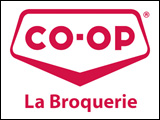A More Christlike Way: A More Beautiful Faith (2019), by Brad Jersak – A Book Review
This latest book by Brad Jersak is a natural sequel to his earlier book, A More Christlike God: A More Beautiful Gospel. In that book Jersak set out to convince his readers that if they wanted to know what God is like, look at Jesus who is the exact representation of the Father. Of course that forces one to the conclusion that God is Love, as the Apostle John would declare (I John 4:8). Instead of being a retributive god who needs blood on the floor to initiate forgiveness, God – as represented by Jesus – is restorative by nature. That book ranks high on the list of the top ten books that have impacted me at profound levels.
A More Christlike Way, follows quite naturally by insisting that the gospel really is an invitation to walk in the footsteps of Jesus. Just as God has been revealed to be a God of Love, so the way of God we are invited to follow is the way of Love. I had a sense while reading the book that Jersak had stumbled upon an Anabaptist vision of the Christian life without drawing on standard Anabaptist literature, except of course the Bible itself. Like in Anabaptism, in Jersak’s view, Jesus models, inspires and enables us to walk the Christlike way. A basic premise he makes is that unChristlike images of God lead to unChristlike ways of living in the world (30).
That means that a starting point for Christian ethics is to “deconstruct” those unChristlike images of God. But he raises a red flag with respect to deconstruction, saying that in a sense it is a violent term that, when overused, can leave one stranded in the swamps of agnosticism. He says he has witnessed too many former Evangelicals abandon the faith all together because they have deconstructed the faith to the point where there is nothing left to reconstruct. He proposes a number of other, less violent terms to rethink one’s faith, for example: Restoration, Renovation, Makeover, or Detox and Rehab. He suggests that, “…it helps if we are mindful that the object of our deconstruction is not Truth or Christ or the gospel per se, but rather, my own constructed ways of thinking and talking about God” (47).
In Part II, Jersak summarizes four commonly held unChristlike ways of being which must be resisted.
- Moralism, rooted in black and white certitudes, leads to rule keeping based on fear and compulsion instead of a way of life rooted in Grace.
- Partisan Amoralism happens when politics trumps morality; when we baptize a political platform and identify it as the gospel.
- Retributive Factionalism is a kind of tribalism that thrives on an “us-them” dynamic which often becomes cruel and ugly.
- Nationalism and Civil Religion emerges when one’s national identity makes one feel superior to other races or cultures, and when our notion of “empire” begins to call for devotion normally experienced in religious contexts.
In Part III, Jersak then delineates seven facets of the Christlike way, all of which he says are “radical” in some way. “Authentic Christ-followers have always been the real radicals, returning to the taproot of their faith in the life and words of Jesus” (108). I found these seven chapters to embody much of what I have absorbed through Anabaptist studies over the years. What I found refreshing, though, was the way Jersak wrestles openly with how to actually live this Christlike way. This, in contrast to a smugness I sometimes sense among Anabaptists who have inherited these notions through their spiritual forbears but have failed to actually try them out in the rough and tumble of real time. Modern Anabaptists, especially in the affluent West, have sometimes been guilty of watering down the radical nature of the Jesus way to make it compatible with a comfortable middle-class lifestyle.
I will summarize each of these chapters briefly:
- Radical Self-Giving, as modeled by Christ, is not so much giving up privilege as “employing privilege.” The focus in Philippians 2 is all about Christ “emptying himself into the world for the sake of the world.”
- Radical Hospitality implies that there is room at the table for all, as seen in the parable of the Great Banquet (Luke 14), even for those who need persuading to overcome their reluctance to accept the invitation.
- Radical Unity is a unity of Love. Jesus calls us to put love ahead of differences (John 20, Ephesians 2, I John 4). That is to say we are held together better by mutual acts of love than insisting on uniformity of belief and practice.
- Radical Recovery challenges us to take the Sermon on the Mount seriously. It is the core of Christ’s teaching, Jesus’ distillation of the Prophets and the peak of the entire biblical tradition. It tells us not so much how to be more spiritual, but how to be more fully human. The Beatitudes lead us not so much to happiness but depict the upside down way of the divine life (2 Peter 1:4). Jersak rejects the common methods of skirting the Sermon on the Mount which mostly suggest it is meant only to drive us to despair and so lead us to depend on grace alone for salvation (159).
- Radical Peacemaking, Radical Forgiveness does not come naturally to us, says Jersak. He responds at length to those who suggest he is reading into the text what he wishes, by depicting his gradual and painful conversion to this way of life.
- Radical Surrender is best depicted by open hands instead of a clenched fist or a limp wrist.
- Radical Compassion, Radical Justice is clearly shown in the parable of Lazarus and the Rich Man, which, says Jersak, is not a story about the afterlife, but about the importance of radical compassion in the Christlike way.
A book filled with both beauty and challenge. Well worth the read!



